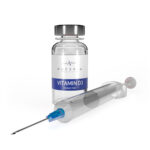When you think of reindeer, what comes to mind? Most likely, it’s Santa’s sleigh, flying across the night sky with Rudolph leading the way. But did you know that there are actual reindeer farms where these magical creatures are raised, cared for, and sometimes even get to hang out with regular people? Yep, it’s true! Let’s take a trip to the world of reindeer farms and discover what goes on behind the scenes when the holiday season isn’t around.
What Exactly is a Reindeer Farm?
A reindeer farm is exactly what it sounds like – a farm that raises reindeer. These farms are typically located in colder climates, like northern Scandinavia, Alaska, and parts of Canada. Reindeer are well-suited to the harsh, snowy environments, which is why they’re often found in places where the winters are long and chilly. They’re tough little creatures with thick coats, hooves built for snow, and the kind of attitude that says, “I’m ready to pull a sleigh… but I’m not doing it every day.”
Unlike other types of farming, reindeer farming isn’t about raising animals for meat, milk, or wool (although that does happen in some places). The primary focus is usually on herding, breeding, and sometimes offering a chance for the public to meet these enchanting animals. In some parts of the world, reindeer farming is a centuries-old tradition, especially among indigenous peoples like the Sámi of Scandinavia.
Meet the Stars of the Show: The Reindeer
Reindeer, or caribou as they are known in North America, are fascinating animals. They are not your average herd animals – they have been adapted to live in extreme conditions. Their hooves are perfectly shaped for traversing snow, and their fur is so thick that they can survive temperatures as low as -40°F. (If we’re being honest, if I had to wear a fur coat that heavy, I’d be complaining every 10 minutes, but these guys are built for it.)
On a reindeer farm, you’ll typically find two types of reindeer: the wild and the domesticated. Wild reindeer are the ones that roam free in the tundra, while domesticated reindeer are raised by farmers who herd them, sometimes for work purposes, but often for tourist attraction. And here’s the funny thing – domesticated reindeer are actually more likely to let you get close enough for a selfie than their wilder cousins.
Some reindeer farms even offer visitors the chance to feed the reindeer, pet them, and learn about their fascinating behavior. If you’ve ever wanted to scratch a reindeer’s ears or see them up close without them running away at the speed of light, a reindeer farm is the place to be.
The Job of a Reindeer Farmer
Being a reindeer farmer is no easy task. Herding reindeer is very different Deer Antler herding sheep or cattle. For starters, reindeer are extremely independent. They aren’t the types to come when called or follow a fence like a well-behaved dog. Instead, they tend to do their own thing, often in the most inconvenient spots. It’s like trying to herd a group of teenagers who are more interested in their phones than in listening to you.
A reindeer farmer’s day is filled with checking on the animals, ensuring they have enough food (reindeer are herbivores, by the way), and making sure they don’t wander off to explore the neighboring forest. In winter, the job gets even harder, as the snow can make it difficult to keep track of where the reindeer are. But at least they’re not complaining about the cold—unlike the farmer!
The Reindeer’s Role in Culture and Tourism
In many parts of the world, reindeer have cultural and historical significance. In Finland, for example, the Sámi people have been herding reindeer for over 1,000 years. For them, the reindeer is not just a source of income, but a symbol of their heritage and way of life. Reindeer farming is an important part of the local economy, especially in remote areas where other farming might not be as viable.
Tourism is another big reason why reindeer farms are becoming more popular. People from all over the world come to see these animals up close, especially around Christmas time. Many farms offer unique experiences, like sleigh rides, Christmas tours, and even the chance to meet a “real-life” Santa Claus. I mean, let’s be honest, what’s Christmas without a reindeer or two?
Fun Facts About Reindeer
Before we wrap up, here are a few fun facts about reindeer that might surprise you:
- Reindeer Antlers: Both male and female reindeer grow antlers. The males shed theirs in the winter, while the females keep theirs until spring. So, if you’re meeting a reindeer with antlers in December, there’s a good chance it’s a lady!
- Rudolph’s Nose: If you think Rudolph’s nose is just a holiday myth, think again! Reindeer actually have a special adaptation in their noses that helps them warm the cold air before it hits their lungs. Who knew that Rudolph might actually be a scientifically accurate character?
- Reindeer Can Swim: Yes, reindeer are capable swimmers. They use their strong legs and hooves to paddle through rivers or lakes when necessary. It’s like the animal version of a snowmobile, only better.
Why You Should Visit a Reindeer Farm
Reindeer farms offer a rare opportunity to interact with these incredible animals, learn about their care, and experience a little bit of magic. Whether you’re taking a sleigh ride, feeding a reindeer, or just enjoying the beautiful scenery, there’s something about spending time with these creatures that feels, well, magical.
So, the next time you see Santa flying through the night sky, just remember – those reindeer aren’t just mythical creatures. They’ve got a whole life on the farm, and they’ve earned their place in history. And while you’re at it, maybe you can sneak in a visit to a reindeer farm for an unforgettable holiday experience. Who knows, you might just meet Rudolph’s cousin!





